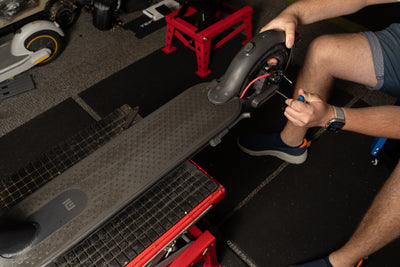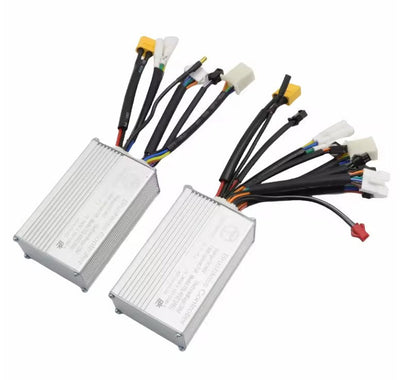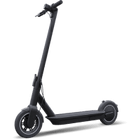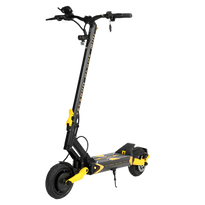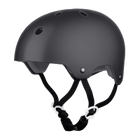Are E scooters legal in NZ?
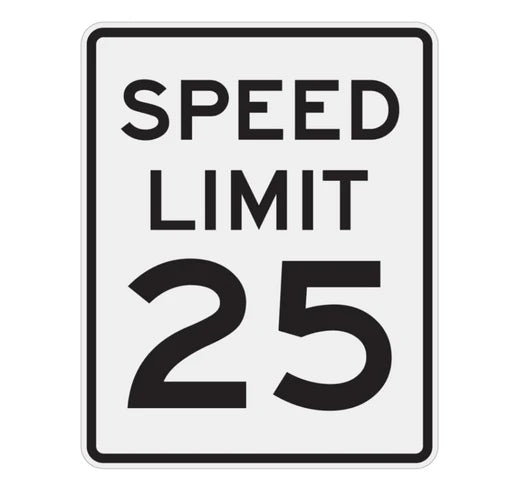
Are E scooters legal in NZ?
Yes. Although the legal definition is very narrow. Scooters outside the definition are not legally allowed on the road, and Police can seize vehicles that fall outside the definition, however, there is no blanket enforcement and many police officers ride e-scooters too.
In Summary
It is difficult to accurately gauge the legality of a vehicle at a glance. Enforcement therefore focuses on behaviour. If you are concerned about the legality of riding a high power e-scooter on the road your best option is to obey road rules including speed limits and follow the cycling code of conduct.
In New Zealand, e scooters for adults are covered by the Cycling Code of Conduct.
Due to the very narrow definition of e-scooters in the legislation this could be seen as a tacit acceptance of larger power e-scooters by NZTA. Certainly a 300w electric scooter which is legally allowed on the road is effectively a toy. It is not suitable for adults and is certainly not suitable for use on the road.
The legislation
There is an exemption in place that defines electric scooters with a maximum output of 300watts as a low power vehicle. “In order to meet the requirements for a low-powered vehicle, the wheels must not exceed 355mm and the motor … not exceeding 300w.” Those e-scooters are exempt from being considered a motor vehicle and can be ridden on the road without vehicle registration and without a licence.
However, it is not possible to determine the maximum power accurately without testing by the manufacturer. Also 300w max power is great for a kids toy, but functionally useless for anyone else. Even hire scooters exceed this limit.
In practice, all e-scooters are treated as exempt simply because it is not practical to determine their power output quickly thereby making enforcement very difficult.
Bottom line. E-scooters are not currently treated as a motor vehicle.
So despite some journalists' claims that scooters over 300w are illegal, this is simply not the case. They are unregulated and therefore, not road legal. Yet, without enforcement they are tolerated and so they exist in a grey area where sometimes conflicting rules can be said to apply.
The ‘Code for Cycling’ from Waka Kotahi specifically names 'e-scooters' as being covered by this code and in our opinion this is the document scooter riders should read and know. It contains specific advice for where and how to ride in a safe and legally responsible manner, including on the road.
What changes are proposed in NZ to regulate electric scooters?
It seems likely e scooters will become legalised or at least regulated in New Zealand.
There is a clear acknowledgement from NZTA/Waka Kotahi that electric scooters have a role to play in New Zealand’s future transport strategy.“Our overall conclusion is that e-scooters have made, and continue to make, a useful contribution to the land transport system.” (Mr Rodley of Waka Kotahi)
NZTA/Waka Kotahi believes that there is scope for further improvements, such as lower speed limits in high pedestrian areas and more use of speed limit signage.
“Over the next five years we will continue to explore these and other measures to promote the safe and responsible use of e-scooters.”
Other proposed changes include mandating helmet use, regulating intoxicated driving and clear speed limits.
Will e scooters over 300 w be made illegal?
It is unlikely, in my view anyway, that power output can be used to categorise e-scooters for the purposes of legislation enforcement. The calculations are beyond the scope of an enforcement situation and require testing and certification by the manufacturer.
Legislation based on power output would be nearly impossible to enforce. In France where electric scooters are legally allowed provided they have a top speed of 25km/h, users simply install a remote controlled speed limiter. Undetectable without opening the scooter.
The NZTA/Waka Kotahi seems to realise the difficulty of enforcing legislation based on power ratings of electric scooters, as unlike their fossil fuel counterparts maximum power is based on a series of computations not readily available to enforcement officers.
That the NZTA plans to monitor the situation over the five years of the exemption suggests that e-scooter users and the industry can expect some regulations in the form of speed limits at the very least.
Police can and do prosecute dangerous and irresponsible behaviour, but can not prevent users operating their vehicles in a safe and responsible manner on footpaths and shared pathways.
Enforcement of behaviour is the approach readily available to police so and legislation is likely to focus on of electric scooter use.
Is it likely high powered ‘hyper scooters’ will be banned?
My guess on this one is still no, however, that may depend on how hyper scooter riders are perceived over the next few years. An import ban on hyper scooters would be relatively easy to administer and enforce.
The most effective way to prevent scenes like this one, where an electric scooter rider was videoed riding in an unsafe manner on an Auckland’s North Western motorway, would be to ban the import of e-scooters of 72 volts and higher. The voltage of the electrical system is an easy target and compliance would be easily monitored and enforced at the border.
The introduction of high power e-scooters that can travel at 100km/h or more raises the question of whether e-scooters could be classified and legally registered as motorbikes, however due to their inherent lack of safety features this seems a very unlikely move for regulators.
Under current legislation mopeds with a maximum output under 2kw or a top speed less than 50km/h are exempt from wof and motorbike licence requirements, though they must still be registered. Those that travel faster than 50 km/h or have higher power output than 2kw are regarded as motorbikes and subject to the same registration, licence and warrant requirements.
Some high power electric scooters certainly produce more than 2kw, and for this reason insurance companies typically use this framework to stipulate that e-scooters must be insured as a motorbike.
E-scooter design is well suited for cheap and efficient transport for short and medium distances. Their standing design with handlebar on a folding stem makes them singularly unsuited to very high speed applications outside a racetrack.
Given the ease with which speed limiters can be circumvented and the difficulties with enforcement once in use, it is possible we could see an import ban on high voltage e-scooters capable of extremely high speeds, however, so far the focus is on behaviour, and thankfully scenes like the one above are rare.
What e scooters can I buy that will be legal in the future?
If you are looking to buy an e scooter and want to have enough power to get around comfortably and safely there is still plenty of choice. You can easily find a powerful dual motor electric scooter that will most likely not fall foul of future rule changes. Indeed any future changes would most likely not be retrospective.
Any scooter with around 2kw nominal power output is considered a decent, basic commuter scooter. It is unlikely such e-scooters will be banned. There are 2 reasons I believe this. First, the max speed under test conditions of this type of scooter is generally 50 - 55km/h. So this is not out of reach of the 50km/h maximum current legislation names.
Second, even at peak power a scooter with nominal 2kw power is likely only getting 2300 - 2400 watts peak power, depending on the efficiency of the motor, and only for the first 10% or so of the charge. Any need to limit the output on such a scooter to meet the 2 kw maximum will be minimal and make little difference to performance for the user.
Recent developments in the e scooter industry has seen a proliferation of vehicles that fit within this 2kw criteria. Compact, dual motor e-scooters out perform some earlier large models and offer the same performance at significantly lower prices. They outsell larger, high powered scooters 3 or 4 times over.
Specialist electric scooter retailers like Freed are supportive of changes that support safe and efficient travel on electric scooters and all e micro mobility. Scooters are supposed to be safe, efficient and fun. They are low emissions and easy to ride. In city and fringe suburbs they enable us to commute easily without adding to congestion.
Proposed rules that allow e-scooters to be legally ridden in much the same way as a bicycle are sensible and reflect the way we already ride and use our e vehicles. Clear speed limits and rules around helmet use, road and cycle lane use would be helpful to us all.
At Freed our mission is to promote micro mobility as a safe and affordable, urban transport choice. We love getting one more car out of rush hour traffic. We offer free advice on the best option for every rider, on safety, and maintenance. We have a wide range of premium e-scooters from tiny to huge, and offer a small range of top quality helmets and jackets.
If you are looking for free advice or have questions you'd like answered give us a call on 021498269. We'd love to help.
While every effort has been made to present information that is accurate and up to date the details and advice in this article may change over time. Some points are based on the writer’s own opinion and do not replace primary research and expert advice. References are correct at the time of publication.

